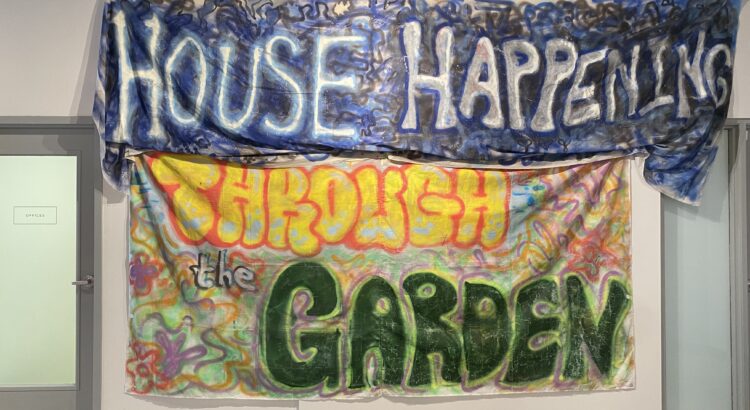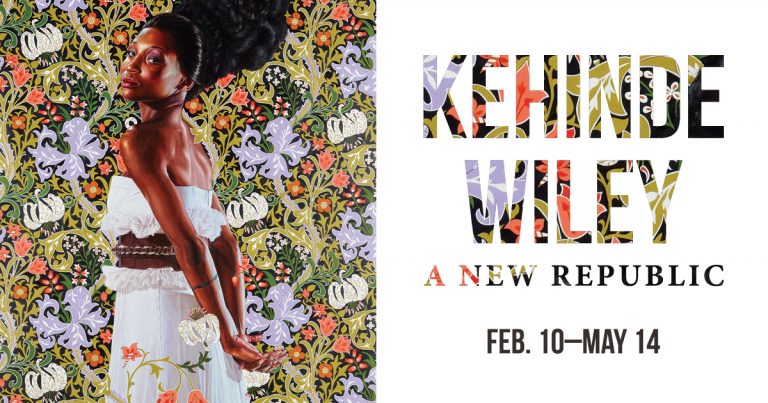When I picture an art gallery, my mind conjures a quiet, sterile space lined with ancient sculptures or framed paintings, each accompanied by a neatly printed placard. Even trendier collections, like those at the Museum of Modern Art, tend to follow a certain formula: curated, polished, and sometimes intimidating.
But The Stampede installation at the Stamps Gallery is something different — fresh, young, and alive. This exhibition is the first gallery showcase for The Stampede, a student organization founded in 2023 with a mission to create spaces for students to present new and unconventional artwork. With a rallying cry to “RUN WITH US!” it presents some of their work while showcasing the energy of this student-driven art movement.

The exhibit serves as a retrospective of everything The Stampede has accomplished in its short existence. In just a year, the group has hosted pop-ups, parties, art markets, concerts, and gallery exhibitions, establishing itself as a vibrant hub for artists, writers, and musicians. This exhibition isn’t just a collection of their work — it’s a living testament to their rapid growth and creative impact.
The first thing you encounter upon rounding the corner into the one-room exhibit is a simulated merchandise table. While it was used for actual sales during the opening night, afterward, the items weren’t available for purchase. Instead, they mimic the kind of setup you’d find at a Stampede event, reinforcing the immersive, DIY ethos of the organization. It’s a clever way to blur the line between exhibition and experience, making visitors feel like they’ve stepped into a real Stampede gathering.

One wall is dedicated to a constantly running short film, projected in a loop, capturing the raw energy of Stampede parties, behind-the-scenes glimpses of artwork in progress, and the collective excitement that fuels the group. Another wall displays the spray-painted banners seen in the video, along with an archive of promotional posters from past Stampede events. The third wall is packed floor to ceiling in a salon-style arrangement, a practical necessity at their pop-up galleries where wall space is often scarce. This layout mirrors the spontaneous and organic nature of their events, where art spills over every available surface.
The variety of mediums on display is striking: zines, collages, paintings, sketches, and even papier-mâché sculptures. Each piece stands on its own, yet together they form a cohesive narrative of experimentation and self-expression. The installation feels less like a traditional gallery and more like an active, ongoing conversation between artists and their audience.
Perhaps the most playful (and fitting) element of the exhibit is the shrine to the “Blood of the Bull,” The Stampede’s signature sangria. A simple spray-paint can and red Solo cups serve as a cheeky nod to the community-building aspect of their events. It’s an artifact not just of their gatherings, but of the youthful, unfiltered spirit that defines The Stampede.

More than just an organization or an exhibit, The Stampede is a community. Every part of this installation pulses with the energy of the college experience: messy, exciting, and full of possibility. Rather than adhering to the conventions of traditional galleries, The Stampede invites us to break free, run wild, and make space for something new.






















